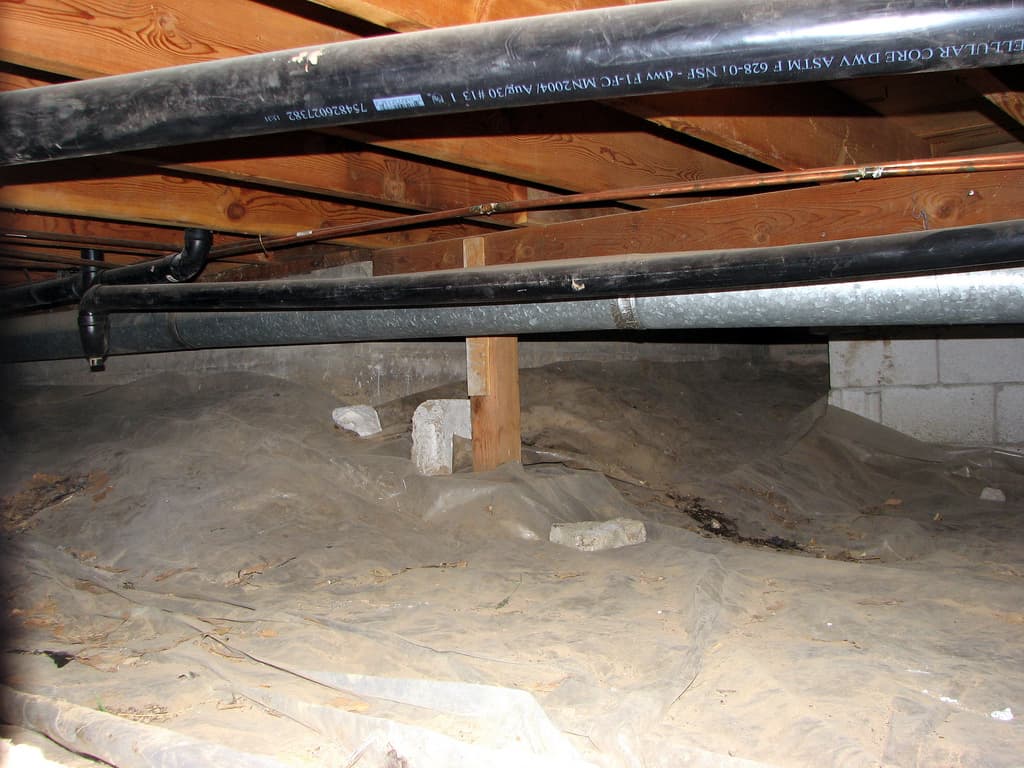Common Building Reinforcements for Structural Integrity
By Editorial Team
Updated on August 27, 2024

When it comes to structures, one generally refers to its frame, which amounts to a building’s structural and load-bearing components. The latter include its roof, beams, columns, slabs, joists, load-bearing walls, and numerous other elements, all of which bear structural loads. Every component is crucial in ensuring the building’s stability and integrity.
Mould is infamous for being a genuine threat to structural elements, especially those made of timber like beams and joists. When said components are exposed to high humidity levels, they end up deteriorating or moulding, which, in turn, further threatens a house’s structural integrity.
Given that most moisture-related problems originate in basements, structural reinforcement work done on a house may be achieved alongside foundation repair work.
What Methods Are Used to Reinforce a Building’s Structure?

Photo: TGC Inc.
Whatever the reason for reinforcing a building’s structure, working with a qualified contractor is essential, especially considering their expertise will allow them to assess the situation at hand, prior to suggesting suitable solutions. Regarding this sort of renovation project, options available and costs can differ widely, hence the need to request quotes to compare costs and contractor services.
Naturally, the contractor you choose should have years of experience in structural reinforcement as it’s a rather complex field. You should also make sure they hold the right permits and insurance so the house and occupants are covered in case of damages.
Address any structural or foundation-related reinforcement needs immediately to avoid higher project costs.

Photo: Deposit Photo
Reinforcing a Building’s Structural Integrity by Replacing Beams
Beams are elongated structural components designed to withstand bending stress. They support overhead loads, such as construction weight or furniture, by transferring said weight to supporting pillars, columns, and walls. This function is crucial for maintaining the stability of the house.
Older homes are often built with timber beams. Therefore, damaged or rotting beams are common occurrences in damp or moisture-prone dwellings. When wood is mould-infested, its load-bearing strength depreciates over time, which endangers the home’s structure and its occupants. You have no choice but to undertake renovation work to replace damaged beams.
Beams and Girders Make for Additional Resistance
This method involves adding new structural elements to support the existing beams and girders. The reinforcement materials used are typically timber or steel structural channels.
Note that additional components are positioned laterally, above or below the existing beams and girders to reinforce the structure effectively.

Photo: Structures Illimitées Inc.
Building Reinforcement: Rebar for Load-Bearing Walls
A home’s stability largely depends on the strength of its load-bearing walls; steel rebar for load-bearing walls is a great option to reinforce your house’s structural integrity. Said reinforcements are connected with corner braces or snap ties. They can be vertical, horizontal, or sloped depending on the technique.
Additionally, to further reinforce the stability of load-bearing walls, rebar prevents cracking, significantly reducing the risk of water leaks.
Crack Repair
Cracks can materialize everywhere: concrete walls, slabs, and foundations, and aren’t uncommon and tend to worsen over time. Indeed, while harmless for the first few years, cracks are a real threat to a house’s structural integrity as they develop over time.
There are several methods of repairing cracks, including expanded polyurethane or epoxy injections, or by installing structural reinforcement bars. Naturally, the method used will consider the associated stresses, but also your budget, given that not all crack repair methods are worth the same.
Building Structure Reinforcement Methods
Beam and joist replacement
Additional support for beams and girders
Load-bearing wall reinforcements
Crack repair
When Should a Building’s Structure Be Reinforced?

Photo: Deposit Photo
The reality of the matter is that structural reinforcement work should be undertaken to strengthen a weakening house, just like it should to carry out major structural changes.
Given that its lifespan will be extended, reinforcing a building’s structure strengthens its integrity while increasing market value. Doing so can either be a choice or a necessity. As such, there’s a myriad of situations that call for a dwelling’s structural reinforcement:
Home extension, such as adding another storey or extending the house, requires re-calculating load distributions
Adding new rooftop installations (solar panels, heavy ventilation system)
Poor initial structural or architectural design
Natural disasters (flooding, fire, seismic activity)
Deteriorating, time-worn house
How to Detect Structure-Related Problems in a House
There are plenty of reasons why a building would require structural reinforcement, some are even easily detectable. These include:
Excessive settling
Sagging floors
Bouncing floors when walking
Cracks in walls and foundation
Sagging or rotting beams and joists
FAQ
What are the four types of reinforcement in construction?
Here are the four types of steel reinforcements for concrete:
Hot-rolled deformed bars
Cold-rolled steel bars
Prestressing steel bars
Mild steel bars
Hot-rolled deformed bars are high-strength steel bars with surface deformations that enhance bonding with concrete, ideal for reinforced structures. Cold-rolled steel bars are manufactured at room temperature, offering a smooth finish and precise dimensions. Prestressing steel bars are tensioned for added structural strength in prestressed concrete. Mild steel bars, made of low-carbon steel, are easy to bend and weld and suitable for general construction.
All four of these steel reinforcement bars can be used for small-scale, mid-size, or large-scale projects.
What is structural reinforcement?
While concrete is extremely strong, even when under heavy compression, it's prone to cracking under tension, becoming rather brittle when on its own, which is where steel reinforcements, also known as rebar, come in handy. Structural reinforcement strengthens weakening structures, increasing the building's load-bearing capacity.
What is the most common reinforcement in construction?
Carbon steel is the most common reinforcement material used for construction purposes. Said type of rebar is also referred to as "black bar," and is an incredibly versatile reinforcement used for a multitude of construction projects, yet is likely to erode when exposed to water.
For more information, check out these articles:
Looking for something else?
Related articles
The latest industry news, interviews, technologies, and resources.

Editorial Team
•18 Apr 2024
Have you noticed the presence of traces of humidity in your crawl space? You're right to wince because a buildup of moisture is never good news.

Editorial Team
•07 Nov 2023
Tiles suit just about every surface, from kitchen to bathroom, floor to ceiling. Nowadays, they’re also a popular choice for backyards. To achieve a clean, refined look, tiles can be used to embellish porches, surround pools, and revamp flat roofs to design a scenic rooftop terrace.

Editorial Team
•07 Nov 2023
For both humans and the home, winter is difficult to endure. Between the cold weather, the strong winds, the ice, and the snow, we all require a little bit of cold weather protection.

Editorial Team
•02 Jun 2025
Taking on a home renovation is never easy. From the get-go, we’re only thinking about the result. Just picture that beautiful new tile floor, those gorgeous new windows or a full-on kitchen remodel, complete with green-friendly appliances.

Editorial Team
•30 Aug 2024
A concrete countertop can help transform the space it's in. Many see concrete as an industrial material. However, if used well, it can adapt to any decor style. A mundane kitchen can undergo a major transformation with the addition of a new concrete countertop covering.